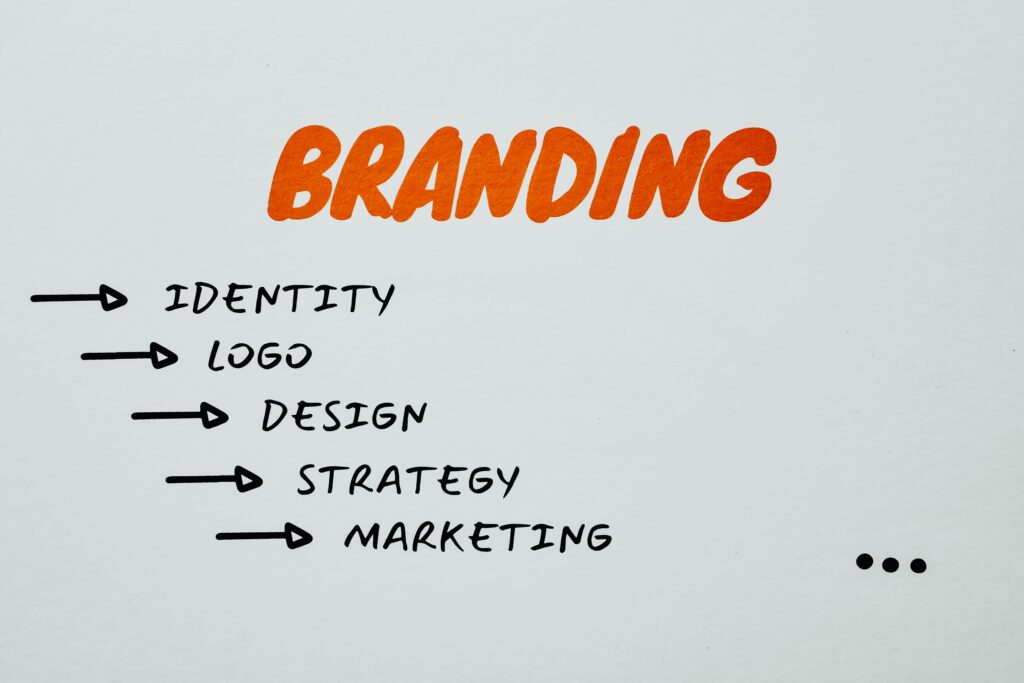Your brand is more than just a logo or tagline—it’s the face of your business and how customers perceive you. But as times change, your brand might not resonate the way it once did. Are you starting to wonder if it’s time for a rebrand? Or maybe you’re unsure if a full rebrand is necessary, or if a smaller update will do the trick.
In this article, we’ll explore key signs that it might be time for a rebrand, the benefits of rebranding, and how to plan for a smooth transition. Whether you’re feeling stagnant or simply curious, this guide will help you decide if a rebrand is the right move for your business.

What is a Rebrand and Why Does It Matter?
Rebranding goes beyond just changing your logo or color scheme. It’s about reshaping how your business is perceived by customers, and sometimes it involves a complete overhaul of your brand’s identity, messaging, and goals.
Why is rebranding important?
As industries and customer expectations evolve, staying relevant is key. Your brand might have been a perfect fit years ago, but if it’s not connecting with your current audience, it could be time to rethink your brand strategy. A well-executed rebrand can modernize your business, make you more competitive, and strengthen customer loyalty.
Top Signs Your Business Needs a Rebrand
How can you tell if it’s time for a rebrand? Here are some common signs that your brand may need a refresh:
1. Your Audience Has Changed
As your business grows, your target audience might shift. If your brand no longer resonates with your evolving customer base, you risk becoming irrelevant. For example, if your products initially catered to millennials but now appeal more to Gen Z, it might be time to update your messaging and visuals to better connect with their values.
2. Your Brand Doesn’t Align with the Experiences you Want your Customer to Have
Maybe you started by doing everything yourself and settled with “it gets the job done.” If this is the case, it probably doesn’t represent your brand, your reputation, and experience your clients get when working with you. This is when you know you need an uplift or rebrand.
3. Your Business Goals Have Shifted
If your company has expanded, added new services, or changed direction, your brand might no longer align with what you do. This disconnect can confuse potential customers. Rebranding allows you to communicate your new goals clearly and effectively. Look into the type of relationship you have with your clients and see if you are looking to change that and how you interact with them.

Benefits of Rebranding: What Can It Do for Your Business?
A successful rebrand does more than just refresh your image—it can drive tangible results for your business. Here’s how:
– Reinvigorate Customer Perception: A rebrand allows you to reshape how customers view your business, highlighting your strengths and values in new ways.
– Boost Competitiveness: Rebranding helps distinguish your business from competitors, especially in crowded markets. Establishing your unique value in the way only you can.
– Attract New Audiences: A fresh brand identity can attract new demographics or expand your reach into different markets. This can also work if your niching-down or catering to an even smaller audience than before.
– Enhance Employee Engagement: A rebrand doesn’t just resonate with customers—it can also energize your team by giving them a renewed sense of purpose and connection to the company’s goals.
Rebrand vs. Brand Refresh: Which One Do You Need?
Not every business needs a full rebrand. Sometimes, a simpler brand refresh will achieve the desired results. But how do you know which one is right for you?
Rebrand:
A full rebrand involves completely overhauling your brand’s visual identity, messaging, positioning and experience your client has with you. It’s typically necessary when your business has changed dramatically or you need to reposition yourself in the market.
Brand Refresh:
A brand refresh involves smaller, more subtle updates, like tweaking your logo or updating your website design or the touch points in your business. It’s ideal for businesses that still feel aligned with their brand but need a modern touch to stay relevant.
Pro Tip: If you’re unsure whether you need a full rebrand or just a refresh, ask your customers for feedback. Their insights can reveal whether your visuals and messaging are aligned with the results and value they get with you.

Common Rebranding Mistakes to Avoid
Rebranding can be a game-changer, but it’s easy to make costly mistakes. Here are some pitfalls to avoid:
– Skipping Research: A successful rebrand starts with understanding your audience and market. Failing to conduct thorough research can lead to a brand that doesn’t resonate.
– Ignoring Customer Input: Your loyal customers are a valuable resource. Ignoring their feedback during the rebranding process can lead to a disconnect, as seen in high-profile failures like **Gap’s 2010 logo rebrand** that was quickly reversed due to customer backlash.
– Rebranding Without Clear Goals: If you don’t have a solid reason for rebranding, you risk confusing your audience. Ensure your rebrand has a clear purpose and direction.
– Overspending: Rebranding is an investment, but it’s important to stick to your budget. Plan carefully to avoid overspending on unnecessary elements.
How to Plan for a Successful Rebrand
Planning a rebrand requires strategy and foresight. Here’s how to approach it:
1. Set Clear Objectives: Know exactly what you want to achieve with your rebrand—whether it’s reaching a new audience, modernizing your image, or repositioning your company in the market.
2. Involve Stakeholders: Engage your team, customers, and key stakeholders in the process. Their input can provide fresh perspectives and ensure everyone is aligned with the new direction.
3. Conduct Market Research: Research your competitors, current industry trends, and audience preferences. This will help you create a brand that’s relevant now and future-proofed for tomorrow.
4. Create a Rebrand Strategy: Outline the specific changes you’ll make, from visual design to messaging. Plan how you’ll communicate the rebrand to your audience, using social media, email marketing, and public relations.
5. Plan the Rollout: Don’t just flip a switch. Gradually introduce your rebrand through a well-executed launch plan to ensure a smooth transition. Use teasers, behind-the-scenes content, and customer engagement to generate excitement.
Real-Life Examples of Successful Rebrands
Here are some inspiring examples of brands that successfully transformed themselves through rebranding:
– Airbnb: Once seen as just a budget travel option, Airbnb’s rebrand helped it evolve into a lifestyle brand focused on unique experiences and belonging.
– Old Spice: The rebrand shifted Old Spice from being a dated men’s product to a modern, youthful brand with a sense of humor. This move helped them capture a new, younger demographic.
– Apple: In the late 1990s, Apple’s rebrand played a critical role in reviving the company. Today, it’s known for its sleek, innovative design and cutting-edge products.

Is a Rebrand the Right Move for You?
Rebranding can be a powerful tool to refresh your business and connect with your audience in new ways. If your brand feels outdated, disconnected from your goals, or is losing ground to competitors, it might be time to consider a rebrand. Whether you go for a full rebrand or just a refresh, the key is to ensure your brand continues to resonate with both current and future customers.
Ready to explore a rebrand or need guidance on where to start? We’re here to help. Contact us for a free consultation and let’s work together to create a brand that tells your unique story.
—
SEO and Engagement Optimization:
1. Internal Linking: Include links to related articles on branding strategy, market research, and business growth (if applicable to the website).
2. External Linking: Link to case studies or external references, such as **HubSpot’s rebranding guide** or a **Forbes article on successful rebrands** for further reading.
3. Keyword Integration: Incorporate high-ranking keywords like “rebrand your business,” “signs you need a rebrand,” “brand refresh,” and “rebranding strategy” throughout the article for optimal SEO performance.
4. Meta Description: Write a concise, keyword-optimized meta description: “Wondering if it’s time to rebrand your business? Learn the key signs, benefits, and how to rebrand successfully with our comprehensive guide.”
This edited version improves clarity, structure, and keyword placement while maintaining the original tone and message, ensuring the article is both informative and optimized for search engines.

View comments
+ Leave a comment